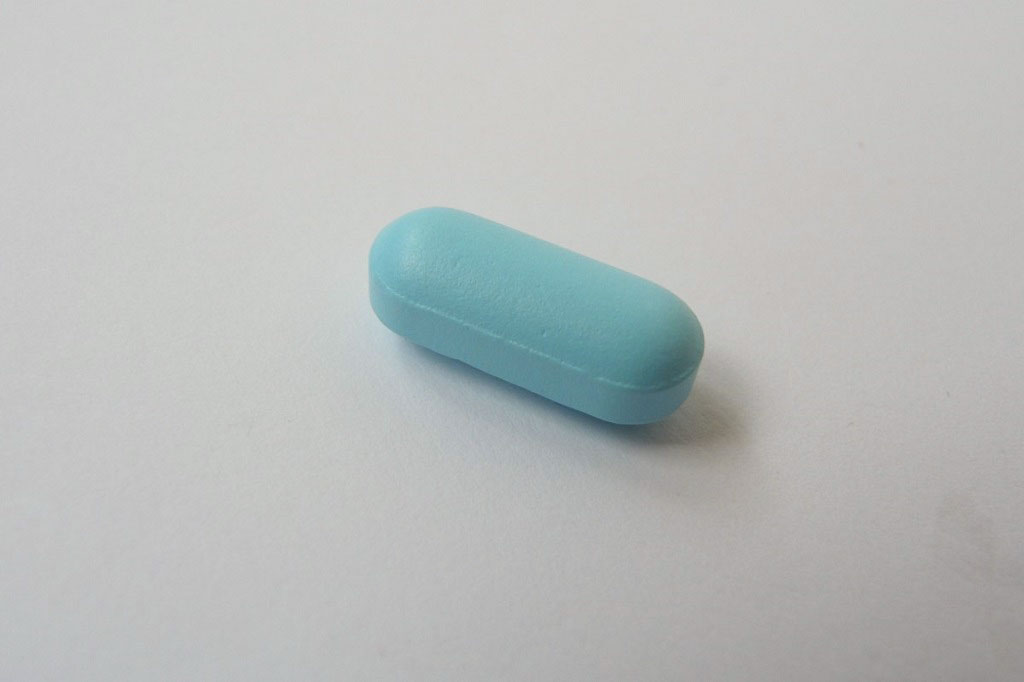Simple test finds baby heart defects
Heart and lungs
A routine screening test for all newborn babies could improve the diagnosis of congenital heart defects, several newspapers have today reported. At present, some heart defects are detected using antenatal scans...
A routine screening test for all newborn babies could improve the diagnosis of congenital heart defects, several newspapers have today reported.
At present, some heart defects are detected using antenatal scans during pregnancy, while others are picked up in routine baby examinations after birth. However, a new study has investigated the use of a technique, already well established in medical practice, called pulse oximetry, which is a simple procedure that uses an infrared sensor to detect the level of oxygen in the blood in the fingers or toes. The technique can highlight when a newborn has heart problems, and so help identify babies who may otherwise go home without diagnosis.
The study tested technique in 20,055 newborns and used special heart ultrasound scans and clinical follow-up over the next 12 months to identify which of the babies had major congenital heart defects (CHD) that would cause death or need surgery within the first year of life, as well as critical defects needing treatment within the first 28 days of life. The study found that 99% of babies without a major heart defect were correctly identified as healthy. However, the test only detected 75% of babies with major CHD and 49% of babies with critical CHD. This means that a negative result does not completely guarantee that the baby was free of major CHD, but these levels of detection are still reported to be better than with existing screening techniques.
While it is not known whether this technique will improve clinical outcomes in babies, these positive results mark it out as a strong candidate for further trial and discussion.
Where did the story come from?
The study was carried out by researchers from University of Birmingham and University of London, Barts and the London School of Medicine and was funded by National Institute for Health Research Health Technology Assessment programme. The study was published in the peer-reviewed medical journal The Lancet.
This research has been accurately covered by a wide range of news sources. However, although the study’s findings have positive implications, this research cannot prove that screening using pulse oximetry would save lives. That said, it does demonstrate potential for the use of the technique, and supports the case for conducting a randomised controlled trial comparing pulse oximetry against other forms of screening or no screening at all.
What kind of research was this?
This was a cohort study that aimed to assess the diagnostic accuracy of pulse oximetry as a screening test for congenital heart defects in newborn babies. To do so the researchers screened 20,055 newborn babies with the test prior to them being discharged from hospital, following them up over 12 months to see how accurate the method was. Over the course of this 12-month follow-up a small number of these babies received treatment for congenital heart disease (CHD) and the researchers looked at how accurate the screening test had been in identifying these babies with major CHD (that which caused death or required surgery within the first 12 months of life).
The main outcomes of interest were:
- *sensitivity *– the proportion of babies, amongst those with CHD, correctly identified by the test as having major CHD (true positives)
- specificity – the proportion of babies, amongst those without CHD, who were correctly identified as not having major CHD (true negatives).
A prospective study such as this is a good way of assessing the accuracy of a screening test. The researchers knew during follow-up which babies had major CHD and which babies did not (through echocardiogram heart study and clinical follow-up), so were able to verify how accurate the oximetry had been at identifying the babies with and without problems.
A 2007 systematic review had examined the accuracy of pulse oximetry in screening for CHD in symptom-free newborns, but researchers found it difficult to assess accuracy of the test due to wide variations in the methods used in studies available for analysis.
What did the research involve?
The researchers recruited symptom-free newborn babies who were born at or near full-term pregnancy (birth at 34 weeks of pregnancy or later) at six maternity hospitals in the West Midlands. The eligible sample included babies who were already suspected of having CHD. All babies received pulse oximetry (on the fingers and toes of their right arm and leg) within 24 hours of birth, or before they were discharged from hospital. Babies received repeat tests one to two hours later if they were found to have less than 95% oxygen saturation in either their upper or lower limb, or if there was >2% difference between measurements from the two limbs. If results were still below threshold or if the results of clinical examination were abnormal the babies were given an echocardiogram (special type of ultrasound) of their heart to identify if they truly did have CHD.
All other infants who had normal oxygen saturation levels were followed up to 12 months of age using regional and national cardiology and congenital anomaly registries, and through clinical follow-up records. These methods identified which of the babies given a negative result (an all-clear) at screening did in fact have CHD.
The main outcomes the researchers were interested in were the sensitivity and specificity of pulse oximetry for detection of critical CHD (that which would cause death or require surgery within 28 days of life) or major CHD (that which would cause death or require surgery within 12 months of age).
What were the basic results?
In total, 20,055 newborn babies received the pulse oximetry screening test. Of these babies, 195 had an abnormal screening result (0.97%). Echo revealed 32 (17% of those given an echo) of the newborns to have CHD: 18 of these were critical and eight were major (also termed serious) defects. Of the 19,860 babies who had a normal pulse oximetry screening test, 41 (0.21%) were found over the course of the year’s follow-up to in fact have CHD: six critical and six major defects.
Therefore, amongst the overall sample, 53 babies had major congenital heart disease that would cause death or need for surgery within 12 months, 24 of which were critical cases. This equates to a rate of 2.6 cases per 1,000 live births. Review of all identified cases revealed that:
- Nineteen of the 53 babies had their condition detected using ultrasound during pregnancy (and therefore before the pulse oximetry).
- Thirty-four of the 53 had been missed by ultrasound during pregnancy.
- Ten of the 34 missed babies with CHD were identified as having CHD through the pulse oximetry (true positives).
- Twenty-five of the 34 babies with missed CHD were given false negatives, meaning that they were not picked up by the pulse oximetry. Their conditions were diagnosed after discharge.
The sensitivity of pulse oximetry (in other words, the proportion of babies correctly identified as having CHD) was calculated to be 75% for detecting critical CHD (95% confidence interval 53 to 90%) and 49% for major CHD (95% CI 35 to 63%). The researchers say that exclusion of 35 cases already suspected to have CHD at birth (on the basis of pregnancy ultrasound results) reduced sensitivity further, down to 58% for critical cases and 29% for major cases.
Specificity (the proportion of babies among those without CHD who were correctly identified as not having major CHD) was very high, at 99.2% (95% CI 99.02 to 99.28%). False-positive results occurred in 169 babies among 20,055 tested (0.8%). Six of these babies did have congenital heart defects, but ones that were not major or critical. A further 40 of these 169 babies had other non-heart-related illnesses, but ones that still required urgent medical intervention.
How did the researchers interpret the results?
The researchers conclude that pulse oximetry is “a safe, feasible test that adds value to existing screening”. It was able to identify critical defects that were not picked up through antenatal ultrasound, and also identified other diseases that were in need of intervention, which they say is an extra advantage.
Conclusion
Babies with congenital heart defects are currently identified through routine ultrasound scans during pregnancy and at routine newborn baby examinations after birth. However, as the researchers say, these methods have a fairly low detection rate for CHD, and a substantial number of babies with life-threatening CHD are discharged without their condition being identified. The pulse oximetry test is already a well-established test for measurement of blood oxygenation, and rationale for its use as a screening test is based on the premise that babies with major CHD would have some degree of hypoxaemia (low blood oxygen level), even if it were not detectable through clinical examination.
This was a well-conducted screening cohort study in which a large sample of newborns all received the pulse oximetry test. Echocardiogram testing and clinical follow-up were used as the “reference standard” to identify which of the babies truly did have critical or major CHD. The study found that the test had a very high rate of specificity at over 99%, which means that almost all babies without major congenital heart disease could be correctly identified as not having a heart problem. Having a low false-positive rate is a major plus point for any screening test, and in this scenario of newborn screening in particular it reduces the chance of unnecessary parental anxiety that would be caused by the babies needing further heart examinations. A further advantage that the researchers noted was that even in the minority of cases when a false-positive result was given, almost a quarter of these babies had other illnesses that required urgent medical care.
However, the sensitivity of the test was lower, detecting only 75% of babies with major CHD and 49% with critical CHD, so with a negative result you could not be completely certain that the baby was free of major or critical CHD. In total, 25 babies amongst those screened were falsely identified as being healthy. However, despite lower sensitivity, researchers note that this is a better level of sensitivity than the current methods of antenatal ultrasound and clinical examination alone.
Pulse oximetry is already a well-established test for measurement of blood oxygenation, and as a potential screening test it has many advantages. It is a quickly administered, simple and non-invasive test that would cause no distress to the baby. It is also a low-cost intervention that is already freely accessible within all hospitals without having extra resource implications.
There are, however, some points to acknowledge:
- There are many different CHDs. This study was measuring accuracy of the test for detecting critical or major CHD that would cause death or require surgery within the first 12 months of life. It has not assessed accuracy for detecting the many other less complex types of CHD, such as common defects including “hole in the heart” (defects in the wall between the heart chambers) or patent ductus arteriosus (failed closure of a blood vessel that is part of the foetal heart circulation). It should not be wrongly assumed that this test will pick up all heart defects.
- The news reported that the test could “save lives”, yet this has not been demonstrated by this study. Although the study findings have positive implications, there is no current evidence that this screening saves lives and this would require further studies assessing groups who were given screening and those who were not.
- The researchers say that if the results from this study were applied to a population of 100,000 babies, roughly 264 babies would have major congenital heart defects. Of these, 130 would be identified by use of pulse oximetry.
This study provides strong evidence of the potential benefits of screening all newborn babies for major CHD using pulse oximetry, a cheap, quick and non-invasive testing method. However, introduction of a new screening test is likely to need further deliberation and follow-up to understand whether such a screening programme could save lives and how to integrate it with other existing methods.






 Subscribe
Subscribe Ask the doctor
Ask the doctor Rate this article
Rate this article Find products
Find products








